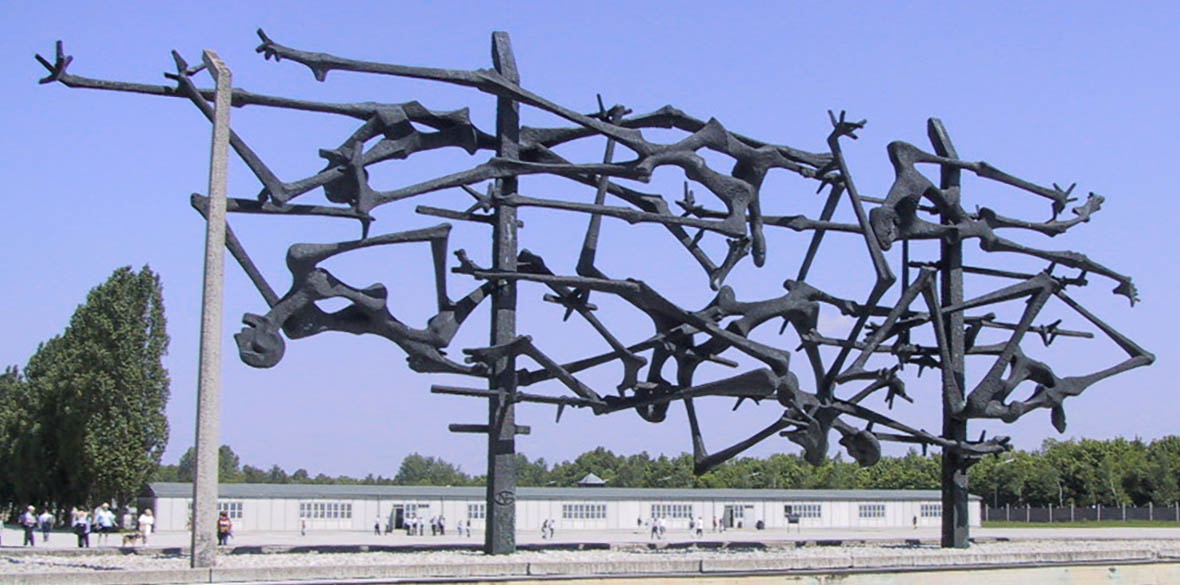This is the last article you can read this month
You can read more article this month
You can read more articles this month
Sorry your limit is up for this month
Reset on:
Please help support the Morning Star by subscribing here
ON SATURDAY January 27 1945 — 76 years ago tomorrow — the Nazi concentration camp of Auschwitz, in Nazi-occupied Poland, was liberated by the Soviet army.
There were 27 main concentration camps set up by the Nazi regime and in them over 1.6 million people were incarcerated and many exterminated. The inmates comprised those who didn’t conform to the Nazi concept of humanity: Jews, gypsies, homosexuals, communists, socialists, trade unionists and those with disabilities. The nazi programme of mass killing of ‘undesirables’ was the world’s most comprehensive and devastating attempt to establish an elite race of supermen and women.
Only belatedly, decades after the war’s end, did the former West German state erect any monuments at all to the victims of fascism. Up until 1995 there was no official research into the history of the concentration camps. This was hardly surprising, as many former Nazis were soon reoccupying their former posts in West Germany even before the flames of war had been extinguished.
While former concentration camp inmates found themselves ostracised, denied compensation and pension rights, their tormentors were treated like returning heroes. It was only as recently as 2005 that the first dedicated Holocaust monument was erected in the country, in Berlin, the capital of the newly united Germany: a large, open space filled with coffin-like, granite blocks in serried rows, designed by the US architect, Peter Eisenmann — hardly evocative of the monstrosity of the crime or a provocative commentary on it.
In the former GDR the situation was very different. Very soon after the war, concentration camps were turned into memorial sites and monuments erected to those who had been interned and were murdered. These former camps were preserved as sites of remembrance and for historical education.
Surviving anti-fascists of that era considered it essential to commemorate that epochal crime in order to ensure that its victims are never forgotten but also to warn succeeding generations of the dangers of racism and fascism.
But how can artists devise works of art to adequately commemorate such horrendous events and do justice to the incarceration and industrialised murder of hundreds of thousands? In the meantime there have been a number of works created in the form of public memorials but few manage to come close to encapsulating those horrors.
In 1965, and only as a result of pressure from survivors, Dachau, in upper Bavaria, was designated an official memorial. It had been neglected and ignored by West German officialdom and had to wait until 2003 before it was transformed into a proper memorial site with exhibition space and educational facilities.
In 1968, former camp inmate and Yugoslav-Jewish sculptor Nandor Glid, was commissioned by a committee of survivors to design the striking memorial sculpture for Dachau. Between three original concrete posts that carried the electric fence enclosing the site, he has created a reimagining of what that fence represented: skeletal figures are entwined in the barbed wire, human beings indistinguishable from the twisted metal barbs, forming a macabre ballet of torment and horror, projecting a sense of armageddon.
GDR artist Fritz Cremer’s simple but striking sculptural memorial for Mauthausn concentration camp in Austria provides a different perspective.
It is a larger-than-life stylised bronze of a gaunt “everywoman,” clothed in toga-like dress, seated on a low wall, directly in front of the wall of the concentration camp itself. She sits stoically erect, frozen in time, unseeing eyes fixed on an indeterminate horizon, tacitly appealing to the world to learn from her experience — on the wall behind her is carved a quote from Bertolt Brecht: “O Germany, pale mother! How have your sons treated you, that you sit among nations, scorned or feared!”
Another powerful example of such memorials is that at Majdanek, in Poland, designed by Wiktor Tolkin, a former Auschwitz inmate, consisting of two parts: a large gate-like monument at the camp’s entrance, carved from a huge block of stone, that guides the eye to a mausoleum rotunda in the distance which holds ashes of the victims. An inscription is cut into the stone of its frieze: “Let our fate be a warning to you.”
This “gate” is set against the open sky, and to begin with looks like it could be a word formed by rough-hewn, congealed letters, but is indecipherable. Or perhaps its intertwined elements are symbolic of the mangled bodies of those who died there?
Each and every one of these memorials, designed by different artists bears witness to this festering sore on the historic body of humanity in a variety of ways, some powerfully so, others liminally, but all pay homage to the idea that public works of art can convey a political message.











